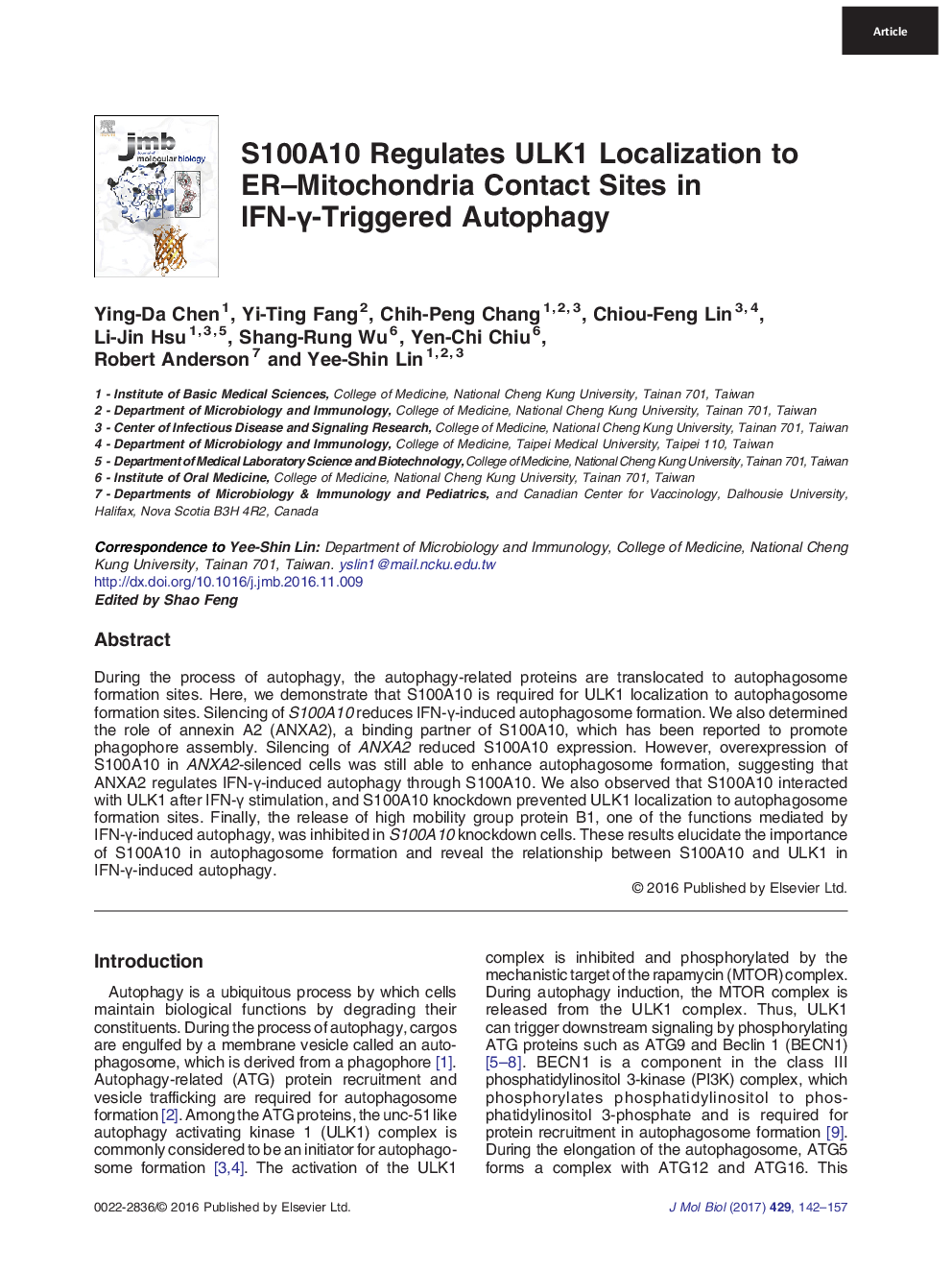| Article ID | Journal | Published Year | Pages | File Type |
|---|---|---|---|---|
| 5533285 | Journal of Molecular Biology | 2017 | 16 Pages |
â¢This study demonstrates a role for S100A10 in autophagy.â¢Silencing of S100A10 reduces IFN-γ-induced autophagosome formation.â¢S100A10 interacts and regulates ULK1 localization to endoplasmic reticulum-mitochondria contact sites.â¢S100A10 regulates autophagy-dependent high mobility group protein B1 release.â¢Our study reveals a regulatory role for S100A10 on ULK1 in IFN-γ-induced autophagy.
During the process of autophagy, the autophagy-related proteins are translocated to autophagosome formation sites. Here, we demonstrate that S100A10 is required for ULK1 localization to autophagosome formation sites. Silencing of S100A10 reduces IFN-γ-induced autophagosome formation. We also determined the role of annexin A2 (ANXA2), a binding partner of S100A10, which has been reported to promote phagophore assembly. Silencing of ANXA2 reduced S100A10 expression. However, overexpression of S100A10 in ANXA2-silenced cells was still able to enhance autophagosome formation, suggesting that ANXA2 regulates IFN-γ-induced autophagy through S100A10. We also observed that S100A10 interacted with ULK1 after IFN-γ stimulation, and S100A10 knockdown prevented ULK1 localization to autophagosome formation sites. Finally, the release of high mobility group protein B1, one of the functions mediated by IFN-γ-induced autophagy, was inhibited in S100A10 knockdown cells. These results elucidate the importance of S100A10 in autophagosome formation and reveal the relationship between S100A10 and ULK1 in IFN-γ-induced autophagy.
Graphical AbstractDownload high-res image (145KB)Download full-size image
